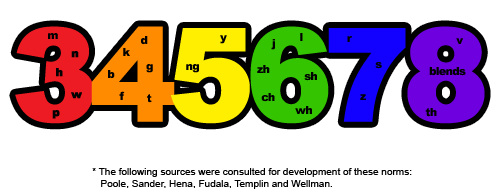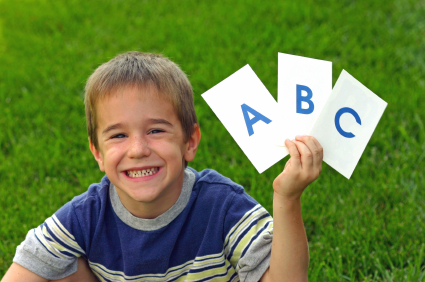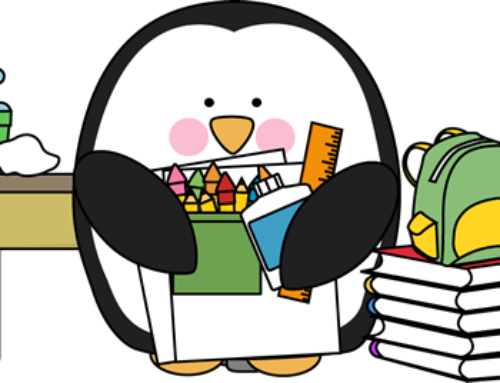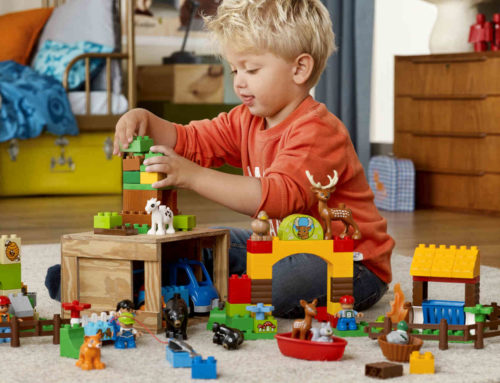When a child has a speech sound difficulty one of the first questions I am asked is, “How long will therapy take?” My answer… brace yourselves… “I don’t know”. I’m not holding out on you I promise. I wish I could tell you. I really really wish I could. Sadly though, there are just too many variables to even hazard a guess!
Sometimes we don’t need to do anything because their error is still completely appropriate for their age. The image below gives you a bit of an idea about the general ages speech sounds are acquired, but for more information and examples about the different kinds of speech sound errors children make (and the ages they should stop making them!) check out our previous post on children’s phonological development.

When attending speech therapy a child’s rate of progress depends on so many different factors, but in my mind one of the most important factors is practise!
There’s no two ways to say this… If you want your child’s speech sounds to improve, they need to do their speech homework everyday! Like I’ve said before, if you want to learn a musical instrument you will never get better if the only time you play is during your lesson. No matter how great your teacher is or how fancy the equipment may be, unless you go home and practise there will be no change and no improvement when you go back the next week. Speech therapy is no different. If you don’t practise, you won’t see results.
I know things are often easier said than done. I understand how hard it is to juggle work, school, illness and everything else life throws your way. There are going to be some times where you find a week has gone past and you haven’t even looked at the homework. We’ve all been there and as a one off, it’s fine. However, if this turns into a week every month, or every other week then we have a problem.
It’s not only how often you practise that makes a difference. It’s also about the way you practise. The type of “homework” that your child needs to do will depend on what level they are currently working at. Generally speaking, if a child can produce the target with 80% accuracy then you can move ahead to the next step. Your speech therapist will guide you on this and will provide ideas for you to do at home. That doesn’t mean that you aren’t allowed to try other things. We welcome that because it helps keep your child motivated and engaged. Doing other tasks instead of the homework provided is fine so long as the tasks are pitched at the same level. For example, if your child needs to practise saying their speech sounds at sentence level they will not improve if they are simply saying each target word once. Even if you did this every single day it would not help them make more progress because the task is too simple for them. Similarly, if your child needs to practise at syllable or single word level, there is no benefit in getting them to make up a story. That task is too hard and detracts their focus from producing the sound they need to work on.
If your child has a straightforward speech sound error that is not age appropriate, the steps below may give you a bit of a guide as to how therapy may progress…
The steps to learn a speech sound…

- Isolation – This is where we practise the target sound all on it’s own. For example, if a child is saying “tar” instead of “car” then we might have to start at this step with lots of “k”, “k”, “k” productions. Some children may need a lot of help in this stage to work out how to produce the sound accurately on demand. It’s not always as simple as getting them to copy you. This is why it’s important to see a speech pathologist! We will be able to investigate what they are doing and help make the necessary adjustments so that they can learn how to make the sound accurately. To move onto the next stage they need to be able to consistently produce the sound on multiple occasions. We cannot move on if they are only getting it right half of the time!
- Syllables – This is when the target sound is joined with a vowel sound. For example, when learning how to make the “s” sound, we might add the vowel sound “ee” and say “see”. Or we might use the vowel first and say “ees”. It’s also important to practise the target sound in the middle of vowels such as in “eesee”. Once a child can consistently produce the target sound with various vowels (just think of all the variations of a, e, i, o, u!), we can move onto the next stage.
- Words – Yep, you guessed it! This is when we ask the child to say single words that contain the target sound. Again, it is important to practise the sound in all word positions. For example, when working on the “l” sound we would try initial position (e.g., lemon, light, lost), medial position (e.g., yellow, sailing, balloon) and final position (e.g., fall, hill, roll), not necessarily all at the same time. Sometimes this may be the first stage that a child has trouble with. They may produce the target sound with ease on it’s own and in syllables, but as soon as you show them a picture of a lion they automatically come out with “Wion”. Often when a child has assigned meaning to a word and is so used to saying it a certain way it can be a hard habit to break.
- Sentences – To begin working in the sentence stage the child is given a very short and simple carrier phrase in which the only word that changes is the target word. The target words are those words used in the previous stage. For example, “I saw a lion. I saw a lemon. I saw a light”. As the child becomes more confident the sentences will change. They may become longer and more complex, with the target sound used on more than one occasion such as, “I looked at the lion”.
- Stories – This stage enables the child to practise speaking with the target sound appearing more frequently and unexpectedly. If your child can read you can let them pick a story and listen to them read through it. Otherwise you can let them make up the story based on what they remember (if it is a familiar book), or let them make it up based on the pictures.
- Conversation – Almost there now! Depending on what works for your family, you may decide to start a conversation with your child each day that is based on a topic that contains some of the target words they have mastered. Otherwise, you might pick a time of the day where you pay particularly close attention to their speech sounds in whatever conversations they are having. It is just as important to correct your child’s speech sound errors in the conversation stage as it is in earlier stages.
- Generalisation – Once the target sound has been mastered in the target words, sentences, stories and conversations it’s time to keep an eye on it across the board! If a child is having difficulty with “s” sounds we clearly can’t teach them every single word that has an “s” in it. Instead, we are aiming for the pattern that the child has learnt (in order to produce their target words and sentences) to transfer across to other non-target words and sentences containing that sound. If you find that the error pops up again here and there, be sure to gently correct it each time. If you are hearing the error frequently then it’s time to go back a step or two as your child isn’t ready for this final stage just yet.
Depending on your child’s ability when they first start out, they may start out at step one, or go straight to step 3. They may move through the first 4 steps really quickly and then seem to hit the brakes once you get to step five. The important thing to remember is that no two children are the same! The way one child progresses will be different to another. That’s ok! There is no right or wrong and it is not a race. If something isn’t working for your child or your family tell your speech therapist. Whether it’s that your child is frustrated or bored, won’t do the homework, doesn’t seem to be improving or even if it’s the fact that ongoing therapy is too expensive, it is important to tell us what’s going on so that we can help you. After all, that’s precisely what we are here for!
One final but VERY VERY important point… Please remember that due to differences in underlying causes, not all speech sound errors are treated this way! If your therapist is taking a different approach do not panic! Don’t be afraid to ask questions so that you know what the plan is and what the goals are. Getting involved with your child’s speech therapy is one of the best ways that you can support and encourage them to become the best communicator they can be!
Don’t forget to Like Modern Speechie on Facebook for more information and tips to help children be the best communicators they can be!







Leave A Comment